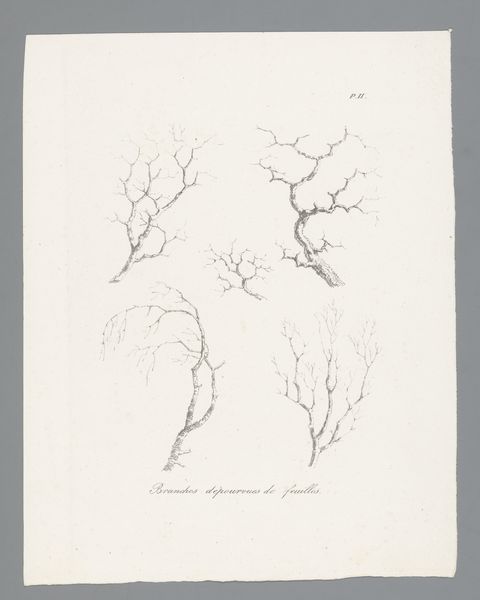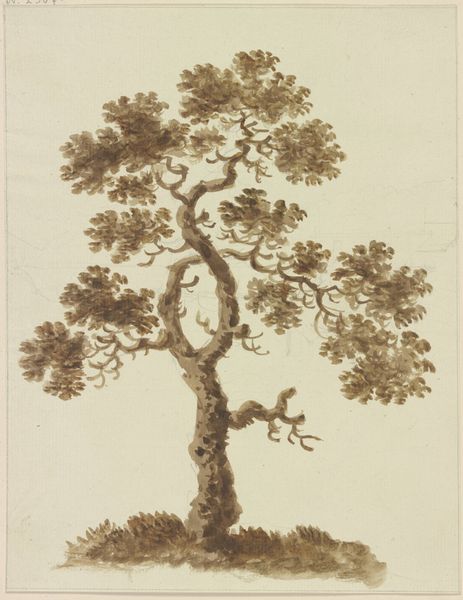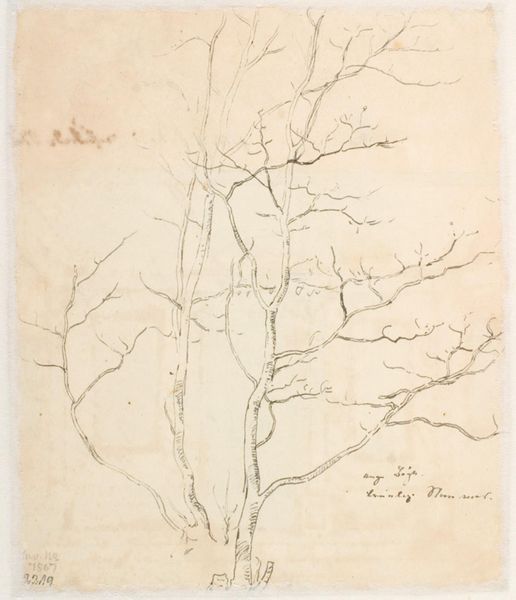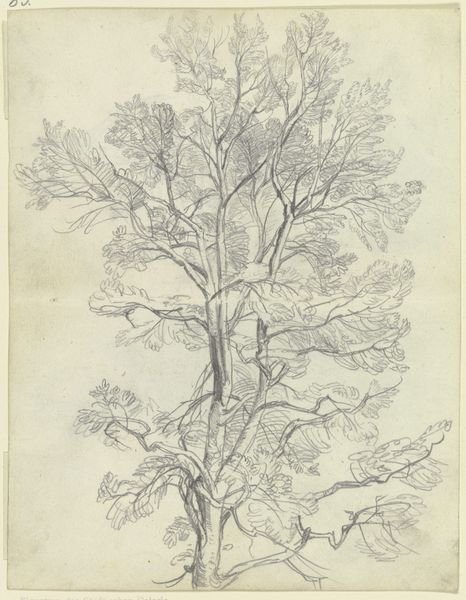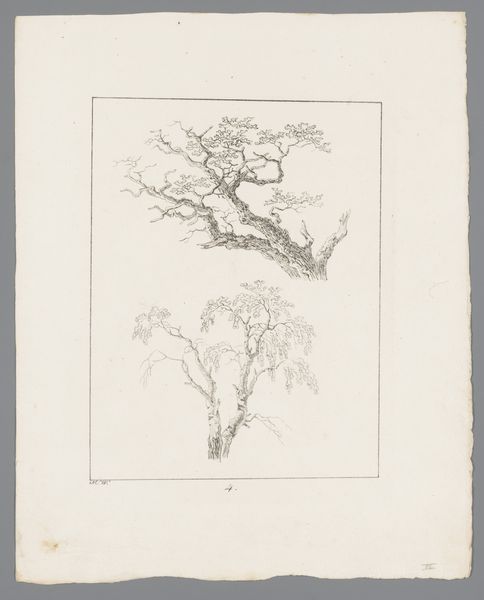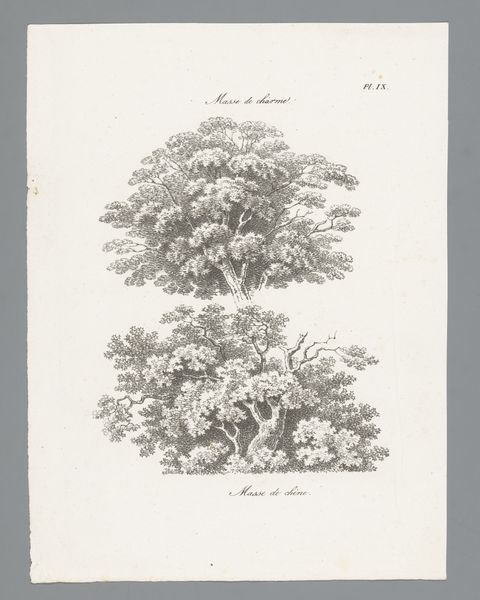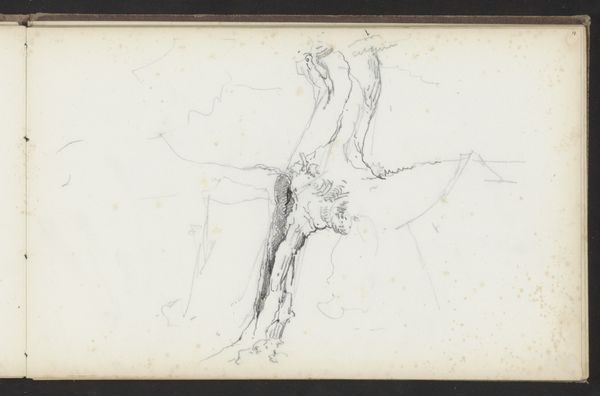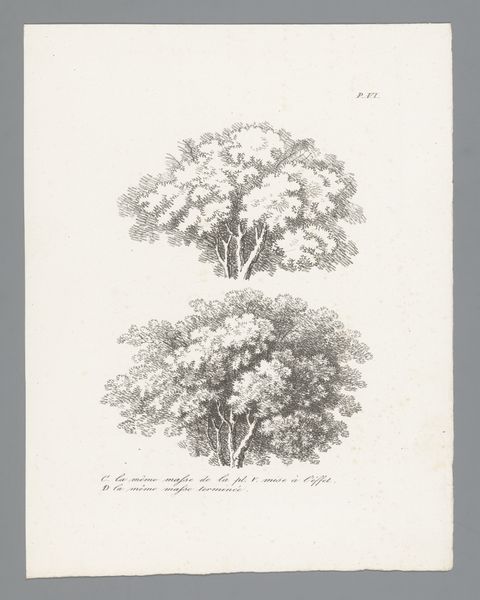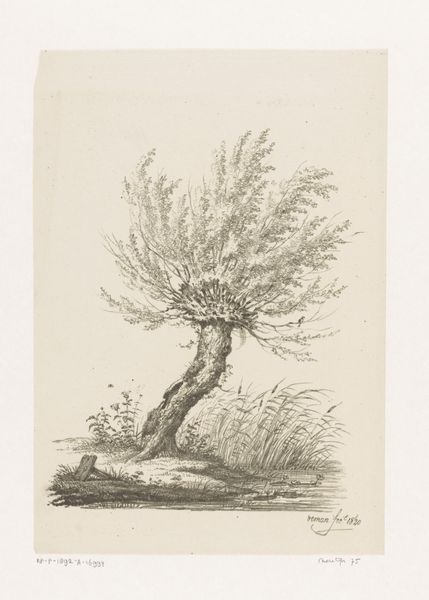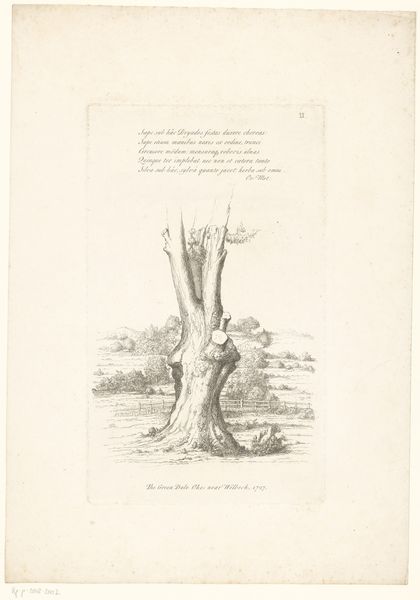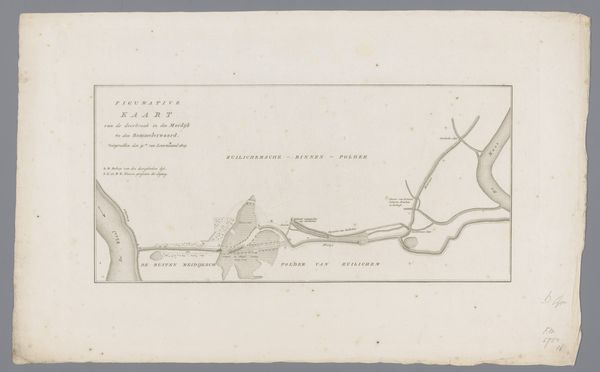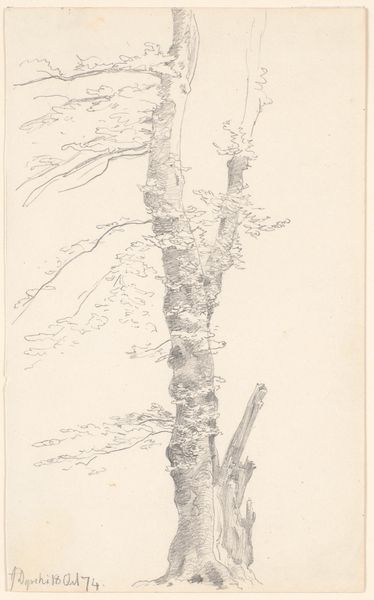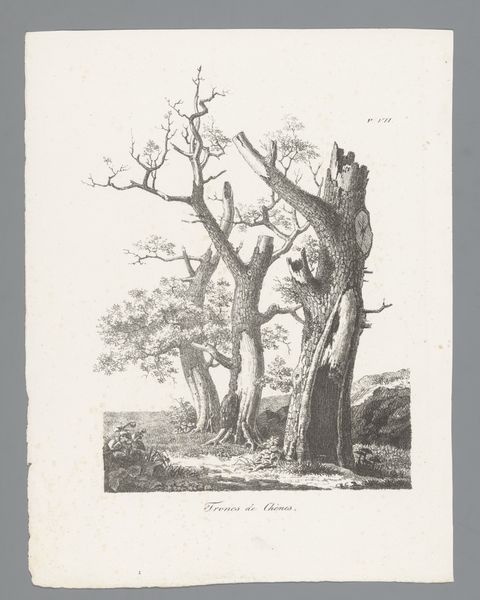
drawing, print, engraving
#
drawing
# print
#
old engraving style
#
landscape
#
line
#
engraving
Dimensions: height 209 mm, width 319 mm
Copyright: Rijks Museum: Open Domain
Curator: So, here we have Gilles Demarteau's "Studie van kale boomtak," or "Study of a bare tree branch," dating from 1732 to 1776. It's an engraving, and it gives off a certain starkness. The branch spans the entire page. What catches your eye? Editor: It's so detailed, almost like a scientific illustration. What was the purpose of depicting a single branch like this? Curator: Well, engravings like this one were often part of instructional drawing manuals. They weren't necessarily intended as standalone artworks but served a pedagogical purpose. Consider the burgeoning middle class of the 18th century. Access to art education was increasing, creating a market for guides and studies like this. Demarteau was part of that market, mass producing these for drawing practice. Does that change how you see it? Editor: Definitely! It makes me think about who was learning to draw and what that meant socially. Were landscape drawings seen as accomplishments for the rising bourgeoisie? Curator: Exactly! The picturesque was becoming a sought-after aesthetic. Being able to capture it – even just a tree branch – became a mark of taste and education, didn't it? It's interesting how a seemingly simple image reflects those shifts in society and status. Editor: I never would have considered its relationship to social class. It makes the artwork more complex, and brings it to life!
Comments
No comments
Be the first to comment and join the conversation on the ultimate creative platform.
